Disney Comics is currently a label of Disney Publishing Worldwide and was a comic book publishing company operated by The Walt Disney Company from 1990 to 1993. It was connected with W. D. Publications, Inc., which was a subsidiary of The Walt Disney Company that published Disney comics during that time span. W. D. Publications, Inc. created Disney Comics in 1990 so that The Walt Disney Company would not have to rely on outside publishers such as Gladstone Publishing. In the US, Disney only licensed Disney comic books to other publishers prior to 1990.

Quality Comics was an American comic book publishing company which operated from 1937 to 1956 and was a creative, influential force in what historians and fans call the Golden Age of Comic Books.
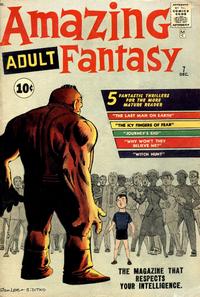
Amazing Adult Fantasy, retitled Amazing Fantasy in its final issue, is an American superhero comic book anthology series published by Marvel Comics from 1961 through 1962, with the latter title revived with superhero features in 1995 and in the 2000s. The final 1960s issue, Amazing Fantasy #15, introduced the popular Marvel superhero Spider-Man. Amazing Adult Fantasy premiered with issue #7, taking over the numbering from Amazing Adventures.

Fawcett Comics, a division of Fawcett Publications, was one of several successful comic book publishers during the Golden Age of Comic Books in the 1940s. Its most popular character was Captain Marvel, the alter ego of radio reporter Billy Batson, who transformed into the hero whenever he said the magic word "Shazam!".
Diamond Comic Distributors, Inc. is an American comic book distributor serving retailers in North America and worldwide. They transport comic books and graphic novels, as well as other popular culture products such as toys, games, and apparel from comic book publishers or suppliers to retailers.
An ashcan comic is a form of the American comic book originally created solely to establish trademarks on potential titles and not intended for sale. The practice was common in the 1930s and 1940s when the comic book industry was in its infancy, but was phased out after updates to US trademark law. The term was revived in the 1980s by Bob Burden, who applied it to prototypes of his self-published comic book. Since the 1990s, the term has been used to describe promotional materials produced in large print runs and made available for mass consumption. In the film and television industries, the term "ashcan copy" has been adopted for low-grade material created to preserve a claim to licensed property rights.

Captain Marvel Adventures was a long running comic book anthology series by Fawcett Comics, starring Captain Marvel during the Golden Age of Comic Books.
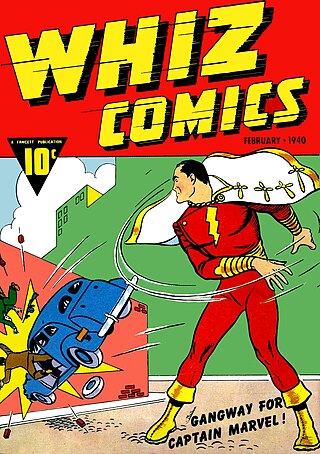
Whiz Comics was an anthology comic book series published by former American comic book publishing company, Fawcett Publications between February 1940 until June 1953. It is widely known for being the comic run in which hugely popular superhero character Captain Marvel (Shazam) made his debut.
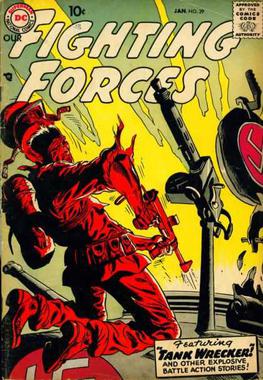
Our Fighting Forces is a war comics anthology series published by DC Comics for 181 issues from 1954 to 1978.
The Grand Comics Database (GCD) is an Internet-based project to build a database of comic book information through user contributions. The GCD project catalogues information on creator credits, story details, reprints, and other information useful to the comic book reader, comic collector, fan, and scholar. The GCD is a 501(c)(3) nonprofit organization incorporated in Arkansas.

Motion Picture Funnies Weekly is a 36-page American comic book created in 1939, and designed to be a promotional giveaway in movie theaters. While the idea proved unsuccessful, and only a handful of sample copies of issue #1 were printed, the periodical is historically important for introducing the enduring Marvel Comics character Namor the Sub-Mariner, created by writer-artist Bill Everett.

Tales of the Unexpected was a science fiction, fantasy, and horror comics anthology series published by DC Comics from 1956 to 1968 for 104 issues. It was later renamed The Unexpected although the numbering continued and it ended at issue #222 in 1982. The title was revived as a limited series in 2006.

Weird Mystery Tales was a mystery horror comics anthology published by DC Comics from July–August 1972 to November 1975.
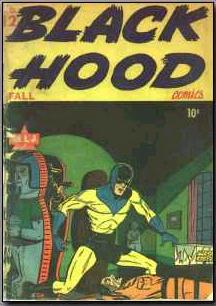
Black Hood Comics was the name of an American anthology comic book series published by MLJ Magazines Inc., more commonly known as MLJ Comics, for eleven issues between Winter 1943 and Summer 1946. The series featured MLJs costumed hero Black Hood, and "Boy Buddies", featuring Shield's partner 'Dusty the Boy Detective' and Wizard's side-kick 'Roy the Superboy', together with humor strips.

Stephen A. Geppi is an American comic book distributor, publisher and former comic store owner. Having established an early chain of comic shops in Baltimore in the mid-late 1970s, he is best known for his distributing business. Geppi founded Diamond Comic Distributors, the largest comic direct distribution service in 1982, and has served as the company's head to the present. Diamond Distribution became the successor to direct market pioneer Phil Seuling's distribution dream when Geppi took over New Media/Irjax's warehouses in 1982. He further bought out early-distributor Bud Plant in 1988, and main rival Capital City in 1996 to assume a near-monopoly on comics distribution, including exclusivity deals with the major comic book publishers.

Shield–Wizard Comics was the name of an American comic book series published by MLJ Magazines Inc., more commonly known as MLJ Comics, for thirteen issues between Summer 1940 and Winter 1944.

Hangman Comics was the name of an American anthology comic book series published by MLJ Magazines Inc., more commonly known as MLJ Comics, for seven issues between Spring 1942 and Fall 1943. It featured MLJs costumed vigilante The Hangman, and "Boy Buddies", featuring Shield's partner 'Dusty the Boy Detective' and Wizard's side-kick 'Roy the Superboy', throughout the series.
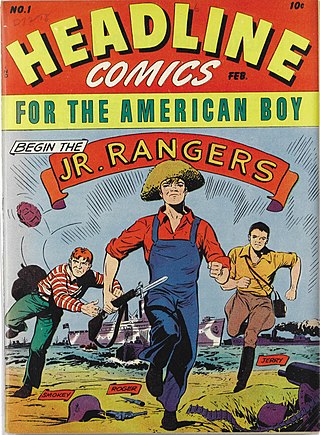
Headline Comics (For The American Boy) was an American comics magazine published by Prize Comics (under the indicia titles American Boys' Comics, Inc. for 21 issues, and Headline Publications, Inc. for 26 issues) from February 1943 – October 1956. The comic was transformed from a boy superhero/adventure title to a crime comic in 1947, with issue #23 (March). The publication became an anthology of the deeds of gangsters and murderers.
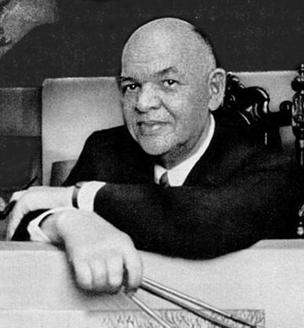
Elmer Cecil Stoner was an American comics artist and commercial illustrator. Stoner was one of the first African-American comic book artists, and is believed to have created the iconic Mr. Peanut mascot. He produced pencil art for the first issue of Detective Comics, published by National Comics Publications, and worked for a variety of other golden age companies such as Timely Comics, Street & Smith, EC Comics, Fawcett Comics, and Dell Comics. Near the end of his life, Stoner was also a spokesman for Gordon's Gin.














